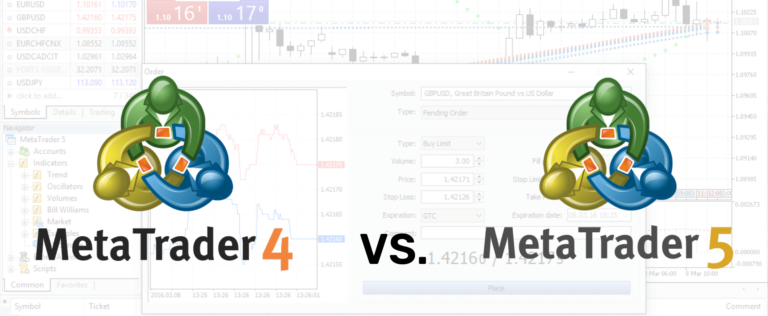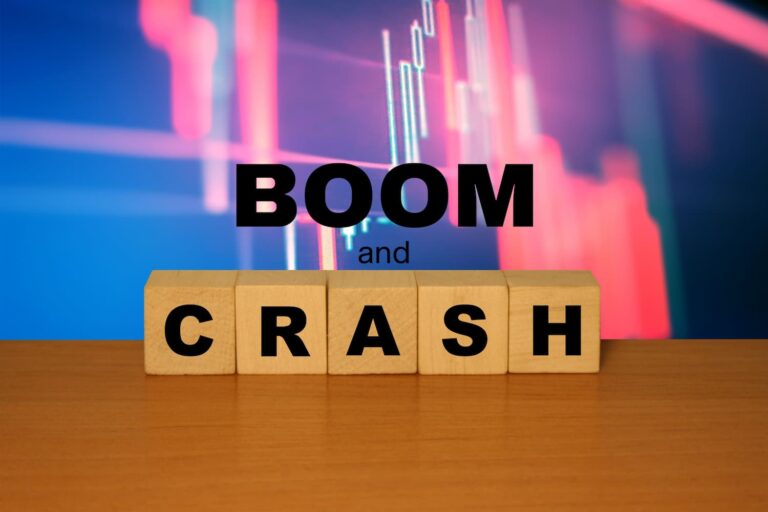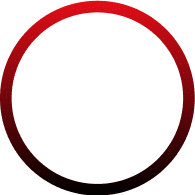Table of Contents
What are Chart Patterns?
The study of trading patterns is an area of technical analysis that deals with the patterns that are formed by the price movements on charts over time, also known as trading chart patterns. These patterns are formed on different markets and asset classes when trends take a pause and go into a consolidation stage. Chart patterns are a way for you to be able to decide whether the price is going to continue in the same direction as the underlying trend after the consolidation phase has ended or if the trend is going to reverse direction. Also, you’d be able to predict the possible target for the next move from the pattern.
It is possible to identify these chart patterns on many different timeframes, from one-minute charts, through one-hour and 4-hour charts, out to daily, weekly and even monthly charts. Furthermore, these chart patterns are formed across practically all asset classes, on individual stock charts, stock indices, commodity markets, bond markets and forex chart patterns. In addition, chart patterns have been seen to occur throughout history, it is possible to look at charts from decades ago, even hundreds of years ago, where different chart patterns can be identified.
Given these chart patterns occur across different time intervals, across all different financial markets and can be viewed back into history, the next question is how do chart patterns work?
How do Chart Patterns Work?
The main reasons that chart patterns are effective as part of technical analysis stem from two of the underlying and connected principles of technical analysis.
First is the principle that history repeats itself. Price action that has occurred in the past does not necessarily replicate itself exactly in the current time frame. But it is possible to locate, identify and therefore potentially profit from price or chart patterns that are forming in the current market, with some likelihood that what has happened previously will happen again.
The other technical analysis principle that patterns rely upon is linked to the first principle (that history repeats itself). The reason that history tends to repeat itself is that the one constant across history with respect to financial markets is that it is the interaction of humans that drives market prices. Although the different macroeconomic, fundamental, and geopolitical events are the drivers of price action, it requires human interaction, the thoughts, emotions, and behaviours of the individual traders and investors acting as a group to cause markets to go up or down in price.
Technical analysis chart patterns are, therefore, a reflection of human emotions, behaviours, and psychology, which will tend to repeat themselves over time. It is possible, then, to benefit from applying pattern analysis to predict potential future price movements.
Understanding Chart Patterns
To properly understand chart patterns, it is necessary to be able to learn the different patterns and their potential for signalling either a more bullish or more bearish bias for any particular market. It is not, however, just a matter of learning the patterns themselves but also understanding why the patterns work. It is necessary to appreciate the psychological and behavioural reasons that any particular trading chart pattern might be a bullish or bearish pattern. Furthermore, chart patterns do not only provide the analyst or trader with the directional bias for the market being analysed or traded but also the potential for price targets derived from the chart patterns themselves.
Why are Chart Patterns Important?
Chart patterns are important to the technical analyst and the technical trader because they give a defined framework from which to make a decision about whether to buy or sell any particular market. In addition, chart pattern analysis allows for the construction of trading setups that can provide defined price objectives and defined exit levels (that is stop-loss placements).
From the perspective of an individual trader, it is possible to learn trading chart patterns like the pros. This means that the individual trader can be on the same level as an institutional trader when it comes to technical analysis and the identification and use of chart patterns, and chart pattern recognition.
Chart patterns can be used with individual stocks, index stock patterns, forex chart patterns or across any number of financial markets assets or asset classes. All that is required is for markets to be liquid and not to be significantly influenced by any one large participant from either the demand side or the supply side.
What is Consolidation in trading?
Consolidation in trading is when a market goes into a sideways range over any particular time frame, as opposed to trending in one direction, either higher or lower. A consolidation phase is when the market is in a non-trend, or in a range, or in a sideways trend, caught between support and resistance levels (or areas). Most chart patterns occur after the market has been in either an upward (bull) or downward (bear) trend, and then enters a consolidation phase. Depending on the nature of the consolidation and the chart pattern that is formed, there is a tendency for the market to likely breakout from the consolidation range, either higher or lower.
Types of Chart Patterns
Now we have learnt what chart patterns are and the basics of how to use them, along with the language used alongside them, we can move on to looking in more detail at the specific types of patterns and what they are used for. Some of the many types of chart patterns are listed below:
- Head and shoulders
- Inverse head and shoulders
- Double top
- Double bottom
- Triple top
- Triple bottom
- Rounding bottom
- Rising Wedge
- Falling Wedge
- Pennant or flag
- Ascending triangle
- Descending triangle
What Chart Pattern Group Do These Fall Into?
There are three main types of trading chart patterns: reversal patterns, continuation chart patterns and bilateral chart patterns. We will now explore each of these in turn, to discover how to trade chart patterns.
Reversal Chart Patterns
Reversal patterns are simply charted patterns that have been recognised over time to indicate when a trend in either an upward direction (bullish) or downward direction (bearish) has concluded it is also likely to then reverse in the opposite direction.
So, for example, if a market was in an uptrend and then went into a consolidation phase, we would look to use pattern recognition to identify the pattern as a potential reversal chart pattern. This would then indicate that the bull trend is likely coming to an end. If you were long (had already bought the market), then you would consider exiting the long position. Or, when the reversal chart pattern had given the correct signal, you might consider entering a short (sell) position.
Conversely, if there was a bear trend and the market indicated a reversal chart pattern, and if you were already short in your positioning (had sold the market), then you may consider exiting the short position. Alternatively, you might consider entering a long (buy) position.
This can be seen as a Double Top indicates the likely end of an up-trend and a probable move lower in price. Conversely, a Triple Bottom forms in a downtrend and indicates a reversal higher for a possible up move.
Continuation Chart Patterns
Continuation chart patterns are when the market is in either a bull or bear trend and then goes into a consolidation phase. Through pattern recognition we could then identify the continuation chart pattern, which would indicate that the market is likely to continue in the direction of the original bull or bear trend (up or down, respectively). The trader would then look to build a strategy around the likelihood of a continuation of the underlying trend once the continuation chart pattern had completed with the appropriate signal.
For example, patterns such as the pennants or flags, you’d expect the price to continue in the direction of the original trend. This comes after the pattern has signaled the consolidation stage has ended.
Bilateral Chart Patterns
Bilateral chart patterns are those that can resolve in either direction, so can be both reversal chart patterns and/ or continuation chart patterns. This will depend on how the pattern is formed and how the price breaks out from the pattern. These chart patterns tend to be less defined compared to the reversal and continuation chart patterns, with the potential to break either higher or lower from the consolidation phase.
Below we can see what chart patterns fall into each group:
| Chart Pattern Name | Chart Pattern Group |
|---|---|
| Head and shoulders top | Reversal |
| Inverse head and shoulders | Reversal |
| Double top | Reversal |
| Double bottom | Reversal |
| Triple Top | Reversal |
| Triple bottom | Reversal |
| Rounding bottom | Reversal |
| Rising wedge | Reversal or Continuation (Bilateral) |
| Falling wedge | Reversal or Continuation (Bilateral) |
| Pennant or flag | Continuation |
| Ascending triangle | Continuation |
| Descending triangle | Continuation |
What are the Most Commonly Used Chart Patterns?
The most commonly used chart patterns are Head and Shoulder Patterns, Double Top & Double Bottom Patterns, Triple Top & Triple Bottom Patterns, Rounding Bottom Pattern, Wedge Pattern, Pennant or Flag Patterns, Ascending & Descending Triangle Patterns and in their own category Candlestick Patterns.
We’d recommend that you become familiar with and learn to spot these patterns to improve your trading.
Head and Shoulders Patterns
There are two types of Head & Shoulders patterns: the Head & Shoulders Top and the Inverse Head & Shoulders.
Head & Shoulders Top: This pattern develops at the top of an up-trend.
- The market is in an up-trend of higher highs and higher lows.
- The market pulls back lower after the Head to then post a lower high, below the peak of the Head, which defines the second Shoulder.
- Between the two lows on either side of the high, that is the Head we then draw a line, across the bottom of the Head, which is known as the “neckline”.
- If, after the second Shoulder, the market breaks below the “neckline”, the Head & Shoulders top is confirmed.
- The target for the potential price move lower or Minimum Price Objective (MPO) is the vertical distance from the top of the Head down to the “neckline”. This distance is projected down from the point where price breaks the “neckline”.
- Sometimes you’d see a rebound back higher to test the “neckline”, which is called the “return move”.
Inverse Head & Shoulders: The Inverse Head & Shoulders is the upside-down version of the Head & Shoulders pattern. It occurs at the bottom of a down trend. When the pattern is triggered through the “neckline”, the MPO is projected higher.
Double Top & Double Bottom Patterns
Double Top: When you look for a Double Top, you need to at first identify an up-trend.
- The price makes a high and pulls back lower
- A rebound then sees another high, at or close to the most recent, highest high.
- The price then falls back lower again, and if it breaks below the low between the two highs, a Double Top is completed.
- The target for the potential price moves lower (MPO) is the vertical distance from the Double Top peaks down to the low between the two highs, then projected lower from the low.
Double Bottom: The Double Bottom is the inverse of the Double Top. The market is in a down trend, then puts in two lows around the same price. If the market breaks above the high between the two lows, a Double Bottom is confirmed.
Triple Top & Triple Bottom Patterns
Triple Top: The Triple Top is effectively the same as the Double Top, but with three highs around the same level. The pattern is completed when price breaks below the lowest low between the three peaks.
Triple Bottom: The Triple Bottom is the opposite of the Triple Top and like the Double Bottom, with three lows around the same level. The pattern is completed when price breaks above the highest high between the three lows.
Rounding Bottom Pattern
A rounding bottom is found at the end of a downtrend and is identified by a series of lows that form a “U” shape. Rounding bottoms are usually seen at the end of longer-term down trends and signal a longer-term price reversal.
Wedge Patterns

Rising Wedge (as continuation pattern): A Rising Wedge occurs when the market is moving higher, but the higher lows are moving up at a steeper angle than the higher highs, to form Rising Wedge pattern. The expectation for the pattern is that the market will then break below the lower up trend line, signaling a move lower. If the market was previously in a down trend, this would be a continuation pattern.
Rising Wedge (as reversal pattern): The Rising Wedge pattern is the same but occurs in an up-trend. The Rising Wedge pattern signals a likely move lower on the break of the pattern, which would then be a reversal of the up-trend.
Falling Wedge (as continuation pattern): A Falling Wedge is the opposite to the Rising Wedge pattern. It is seen when the market is moving lower, with the lower highs moving down at a steeper angle than the lower lows. The expectation for the Falling Wedge pattern is that the market will push above the steeper, down trend line, signaling a move higher. If the market was previously in a up-trend, this would be a continuation pattern.
Falling Wedge (as reversal pattern): This is the same as the above Falling Wedge pattern but occurs in a down trend. The Falling Wedge pattern signals a likely move higher on the break of the pattern, which would then be a reversal of the down trend.
Pennant or Flag Patterns
- The Pennant and Flag patterns are continuation patterns and most common and reliable on short-term charts.
- They occur when price accelerates higher or lower, almost vertically.
- This accelerated move makes up the “flagpole”.
- Then price goes into a consolidation phase, where very little of the previous accelerated move is surrendered.
- The shape of the consolidation pattern is described as a Flag if it a rectangle contained by two parallel lines either side of the initial accelerated move.
- It is a Pennant if it is shaped like a triangle.
- If price breaks from the Pennant or Flag pattern in the same direction as the original accelerated move, then the MPO is the height of the flagpole projected higher or lower.
Ascending & Descending Triangle Patterns
Ascending Triangle
- This pattern usually occurs in an up-trend after the price goes into consolidation.
- The consolidation phase is characterized by a Triangle with ascending lows, but highs around the same price.
- The expectation is for the consolidation to resolve higher, above the highs.
- The MPO is then measured as the widest point of the Ascending Triangle (the base of the triangle), projected up from the highs of the triangle.

Descending Triangle: This pattern is effectively the opposite of the Ascending Triangle. When the price break below the bottom of the Descending Triangle support line, a continuation of the downtrend is signalled. The MPO is calculated as with the Ascending Triangle.

We have looked at the most popular chart patterns here and shown you how to identify these different patterns. You should be able to decide on the likely direction of the market and to can calculate price targets from the patterns. We wish you well trading with chart patterns with Hantec Markets.















